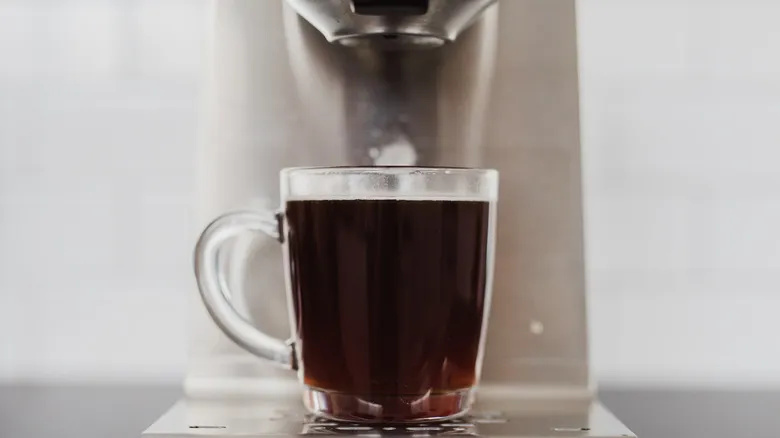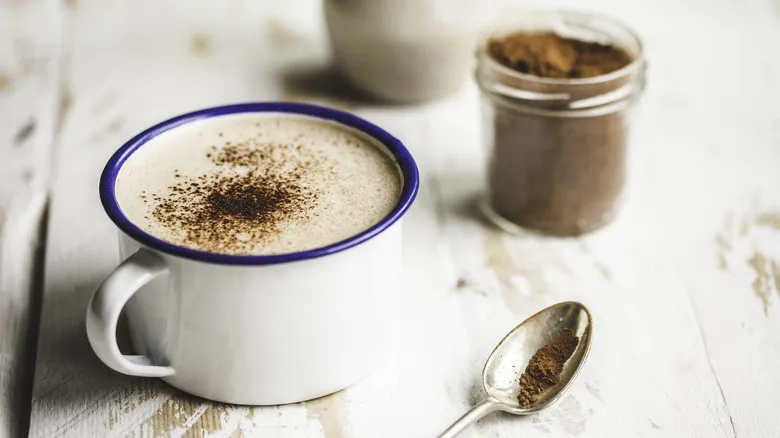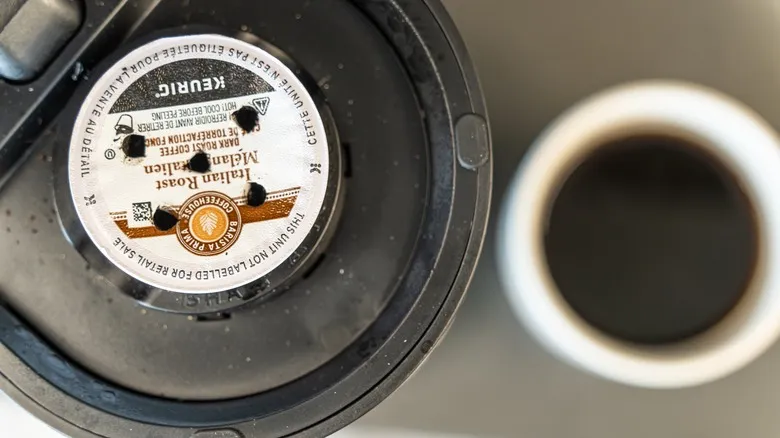Other tips for keeping your Keurig clean

Removing your Keurig pods after each brew is a good practice for keeping your machine clean, but it doesn't substitute for the regular maintenance necessary to ensure your Keurig operates safely. For example, it's advisable to clean your machine at least once a week to prevent mold growth. This involves washing the K-cup holder and clearing out any coffee grounds that may have spilled from your pods. A toothbrush is effective for this task, as it can scrub away any old coffee residue you definitely want to avoid. You can also use a paperclip to clean the Keurig needle and eliminate any buildup of debris.
Moreover, descaling your machine every three to six months is crucial. Neglecting to descale can lead to calcium buildup inside, which may cause steaming, strange noises, and unpleasant-tasting coffee. If the calcium accumulation is severe enough, it can completely block the water intake and output, potentially damaging the machine. Fortunately, Keurig offers its own descaling solutions, such as the Keurig three-month maintenance kit, specifically designed to keep its single-serve coffee makers clean and hygienic.
In between descaling sessions, you can use a vinegar and water solution to help maintain the cleanliness of your machine's interior, as it effectively removes calcium and oil residue. To do this, fill your reservoir with a 1:1 mixture of water and vinegar, and run your machine until the reservoir is empty. Just be sure to run the machine a few times with plain water afterward to eliminate any vinegar before brewing your next cup of coffee.
Recommended

The Science Behind Why Coffees Make You Need To Use The Bathroom

'We Proudly Serve Starbucks' Locations Aren't What They Seem

It's Time To Start Mixing Cocoa Powder Into Your Coffee

For A More Complex Spiked Coffee, Opt For A Flavored Vodka
Next up

